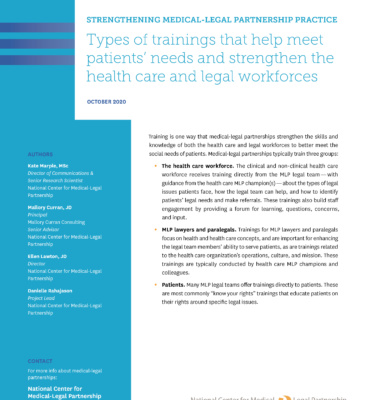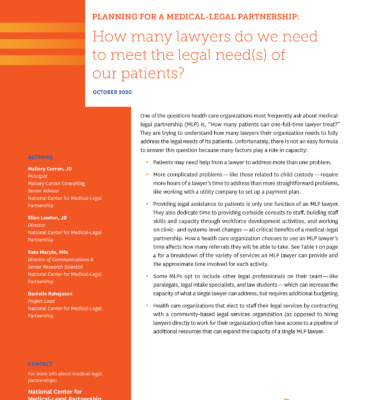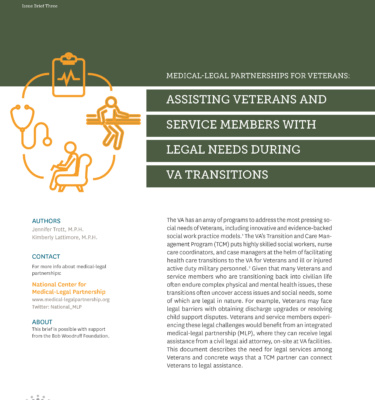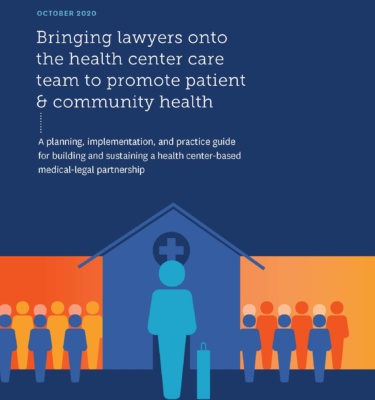Monday, October 26, 2020
Training is one way that medical-legal partnerships strengthen the skills and knowledge of both the health care and legal workforces to better meet the social needs of patients. Medical-legal partnerships typically train three groups: the health care workforce, MLP lawyers and paralegals, and patients. This tool recommends steps every MLP team can take to plan for their trainings. It also suggest content, forums, and training tips for each audience. It can be used by MLP teams to plan for and develop their own training modules....Read More
Friday, October 23, 2020
This tool describes the factors that impact an MLP lawyer's capacity and the types of activities--such as training, curbside consults, and legal representation of patients--that MLP lawyers engage in and the approximate time involved in each. It also offers three models estimating what one MLP lawyer could handle in a year based on the organization's priorities....Read More
Wednesday, October 14, 2020
This document describes the need for legal services among Veterans and concrete ways that a VA Transition Care Management (TCM) Program can connect Veterans to legal assistance....Read More
Tuesday, October 6, 2020
This toolkit provides the health center community with information and resources to start, strengthen, and sustain a medical-legal partnership (MLP). The toolkit can be used both by health centers new to MLP who want help with the initial planning process and by health centers that are already actively providing legal services, but want help facilitating continuous quality improvement conversations to address issues like low/high referral volumes or funding instability....Read More




